Generalized Carrier Index Differential Chaos Shift Keying Based SWIPT with Conversion Noise and Path Loss-Effect
Abstract
:1. Introduction
2. System Model of GCI-DCSK SWIPT
2.1. Transmitter
2.2. Receiver
3. Performance Analysis of System
3.1. Output of the Correlator in Two Intervals
3.2. BER Performance Analysis of GCI-DCSK SWIPT
3.2.1. BER of Index Bits
3.2.2. BER of Modulated Bits
3.2.3. BER of System
3.3. Harvest Energy Estimation for GCI-DCSK SWIPT
3.4. EE and SE Analysis of GCI-DCSK System
4. Numerical Results and Discussions
5. Conclusions
Author Contributions
Funding
Institutional Review Board Statement
Informed Consent Statement
Data Availability Statement
Conflicts of Interest
References
- Kennedy, M.; Kolumban, G.; Kis, G.; Jako, Z. Performance evaluation of FM-DCSK modulation in multipath environments. IEEE Trans. Circuits Syst. I Fundam. Theory Appl. 2000, 47, 1702–1711. [Google Scholar] [CrossRef] [Green Version]
- Chong, C.C.; Yong, S.K. UWB Direct Chaotic Communication Technology for Low-Rate WPAN Applications. IEEE Trans. Veh. Technol. 2008, 57, 1527–1536. [Google Scholar] [CrossRef]
- Kolumban, G.; Kennedy, M.; Chua, L. The role of synchronization in digital communications using chaos. I. Fundamentals of digital communications. IEEE Trans. Circuits Syst. I Fundam. Theory Appl. 1997, 44, 927–936. [Google Scholar] [CrossRef] [Green Version]
- Sui, T.; Feng, Y.; Jiang, Q.; Liu, F.; Zhang, T. Design and Analysis of a Short Reference Orthogonal Double Bit Rate Differential Chaotic Shift Keying Communication Scheme. Electronics 2022, 11, 2020. [Google Scholar] [CrossRef]
- Jia, Y.Q.; Jiang, G.P.; Yang, H.; Yu, B.; Du, M.D. Design and Performance Analysis of a Multi-Carrier M-Ary DCSK System with Multilevel Code-Shifted Modulation Based on Fractional-Order Chaos. Electronics 2021, 10, 2343. [Google Scholar] [CrossRef]
- Başar, E.; Aygölü, U.; Panayırcı, E.; Poor, H.V. Orthogonal Frequency Division Multiplexing with Index Modulation. IEEE Trans. Signal Process. 2013, 61, 5536–5549. [Google Scholar] [CrossRef]
- Liu, S.; Chen, P.; Chen, G. Differential Permutation Index DCSK Modulation for Chaotic Communication System. IEEE Commun. Lett. 2021, 25, 2029–2033. [Google Scholar] [CrossRef]
- Xu, W.; Tan, Y.; Lau, F.C.M. Design and Optimization of Differential Chaos Shift Keying Scheme with Code Index Modulation. IEEE Trans. Commun. 2018, 66, 1970–1980. [Google Scholar] [CrossRef]
- Cai, G.; Fang, Y.; Wen, J.; Mumtaz, S.; Song, Y.; Frascolla, V. Multi-Carrier M-ary DCSK System With Code Index Modulation: An Efficient Solution for Chaotic Communications. IEEE J. Sel. Top. Signal Process. 2019, 13, 1375–1386. [Google Scholar] [CrossRef]
- Cheng, G.; Chen, X.; Liu, W.; Xiao, W. GCI-DCSK: Generalized Carrier Index Differential Chaos Shift Keying Modulation. IEEE Commun. Lett. 2019, 23, 2012–2016. [Google Scholar] [CrossRef]
- Cai, G.; Fang, Y.; Chen, P.; Han, G.; Cai, G.; Song, Y. Design of an MISO-SWIPT-Aided Code-Index Modulated Multi-Carrier M-DCSK System for e-Health IoT. IEEE J. Sel. Areas Commun. 2021, 39, 311–324. [Google Scholar] [CrossRef]
- Cai, X.; Xu, W.; Hong, S.; Wang, L.; Zhang, L. General Carrier Index Aided Dual-Mode Differential Chaos Shift Keying with Full Mapping: Design and Optimization. IEEE Trans. Veh. Technol. 2021, 70, 11665–11677. [Google Scholar] [CrossRef]
- Miao, M.; Wang, L.; Katz, M.; Xu, W. Hybrid Modulation Scheme Combining PPM with Differential Chaos Shift Keying Modulation. IEEE Wireless Comm. Lett. 2019, 8, 340–343. [Google Scholar] [CrossRef] [Green Version]
- Varshney, L.R. Transporting information and energy simultaneously. In Proceedings of the 2008 IEEE International Symposium on Information Theory, Toronto, ON, USA, 6–11 July 2008; pp. 1612–1616. [Google Scholar]
- Qian, M.; Cai, G.; Fang, Y.; Han, G. Design of Link-Selection Strategies for Buffer-Aided DCSK-SWIPT Relay System. IEEE Trans. Commun. 2020, 68, 6023–6038. [Google Scholar] [CrossRef]
- Mukherjee, P.; Psomas, C.; Krikidis, I. Differential Chaos Shift Keying-Based Wireless Power Transfer with Nonlinearities. IEEE J. Sel. Top. Signal Process. 2021, 15, 1185–1197. [Google Scholar] [CrossRef]
- Cheng, G.; Xu, W.; Chen, C.; Wang, L. SWIPT Schemes for Carrier Index Differential Chaos Shift Keying Modulation: A New Look at the Inactive Carriers. IEEE Trans. Veh. Technol. 2019, 68, 2557–2570. [Google Scholar] [CrossRef]
- Yang, H.; Tang, W.K.S.; Chen, G.; Jiang, G.P. Multi-Carrier Chaos Shift Keying: System Design and Performance Analysis. IEEE Trans. Circuits Syst. I 2017, 64, 2182–2194. [Google Scholar] [CrossRef]
- Nasir, A.A.; Zhou, X.; Durrani, S. Relaying Protocols for Wireless Energy Harvesting and Information Processing. IEEE Trans. Wirel. Commun. 2013, 12, 3622–3636. [Google Scholar] [CrossRef] [Green Version]
- Wang, L.; Cai, G.; Chen, G.R. Design and Performance Analysis of a New Multiresolution M-Ary Differential Chaos Shift Keying Communication System. IEEE Trans. Wirel. Comm. 2015, 14, 5197–5208. [Google Scholar] [CrossRef]
- Huang, T.; Wang, L.; Xu, W.; Lau, F.C. Multilevel code-shifted differential-chaos-shift-keying system. IET Comm. 2016, 10, 1189–1195. [Google Scholar] [CrossRef] [Green Version]
- Sun, C.; Yang, C. Energy-Efficient Hybrid One- and Two-Way Relay Transmission. IEEE Trans. Veh. Technol. 2013, 62, 3737–3751. [Google Scholar] [CrossRef]
- Meyr, H.; Moeneclaey, M.; Fechtel, S.A. Digital Communication Receivers, Synchronization, Channel Estimation, and Signal Processing; Proakis, J.G., Ed.; Wiley Series in Telecommunications and Signal Processing; Wiley: Hoboken, NJ, USA, 1998. [Google Scholar]

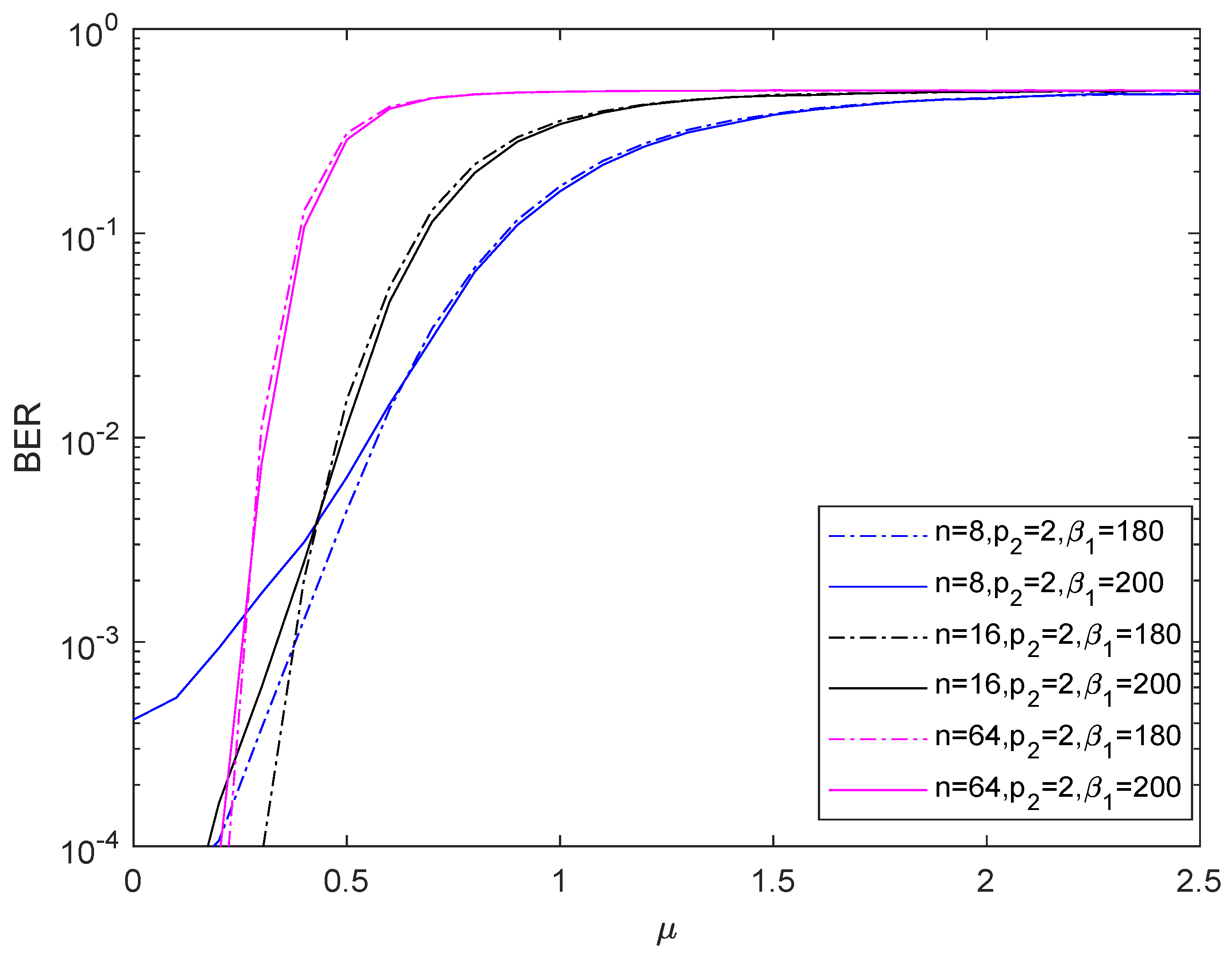
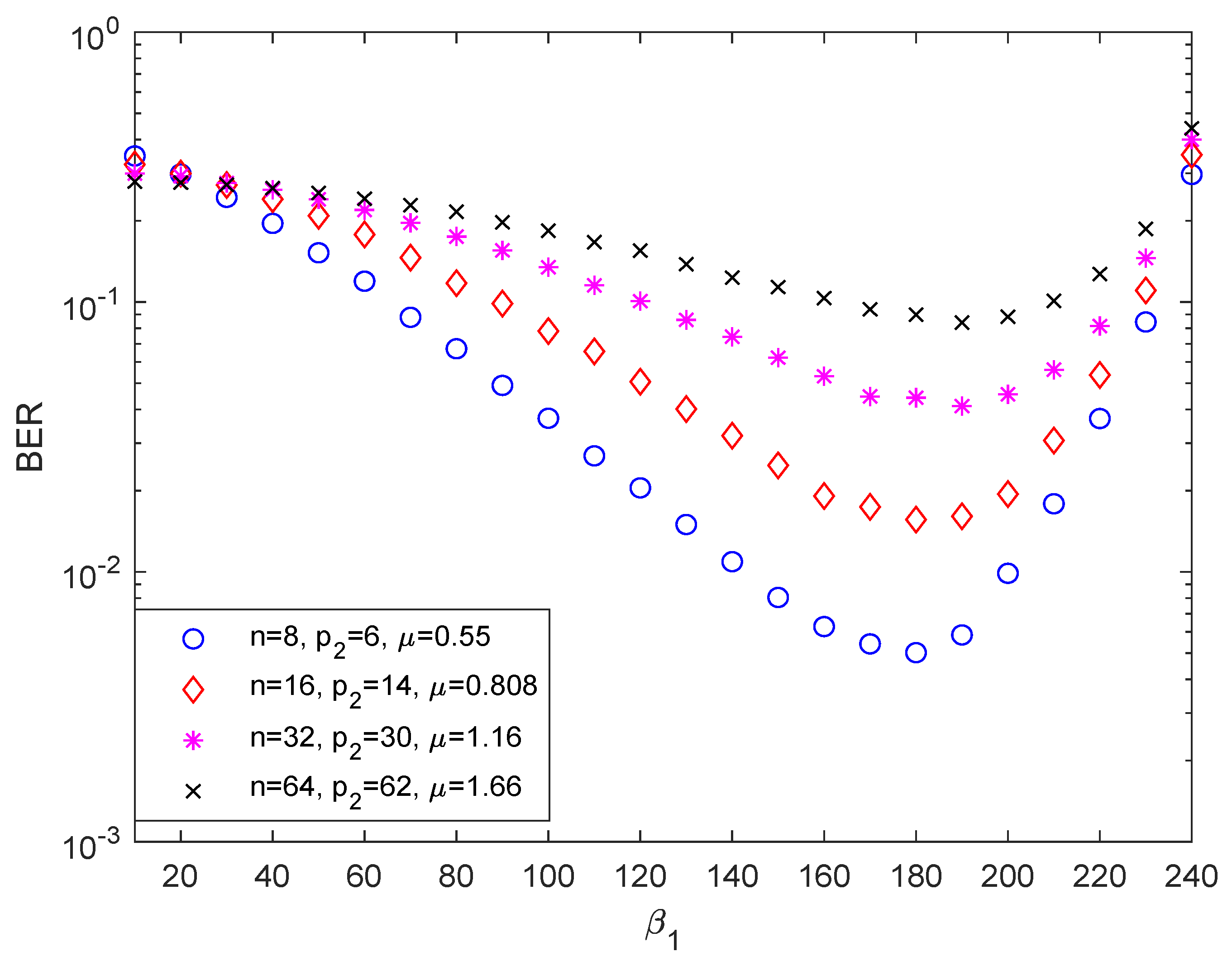
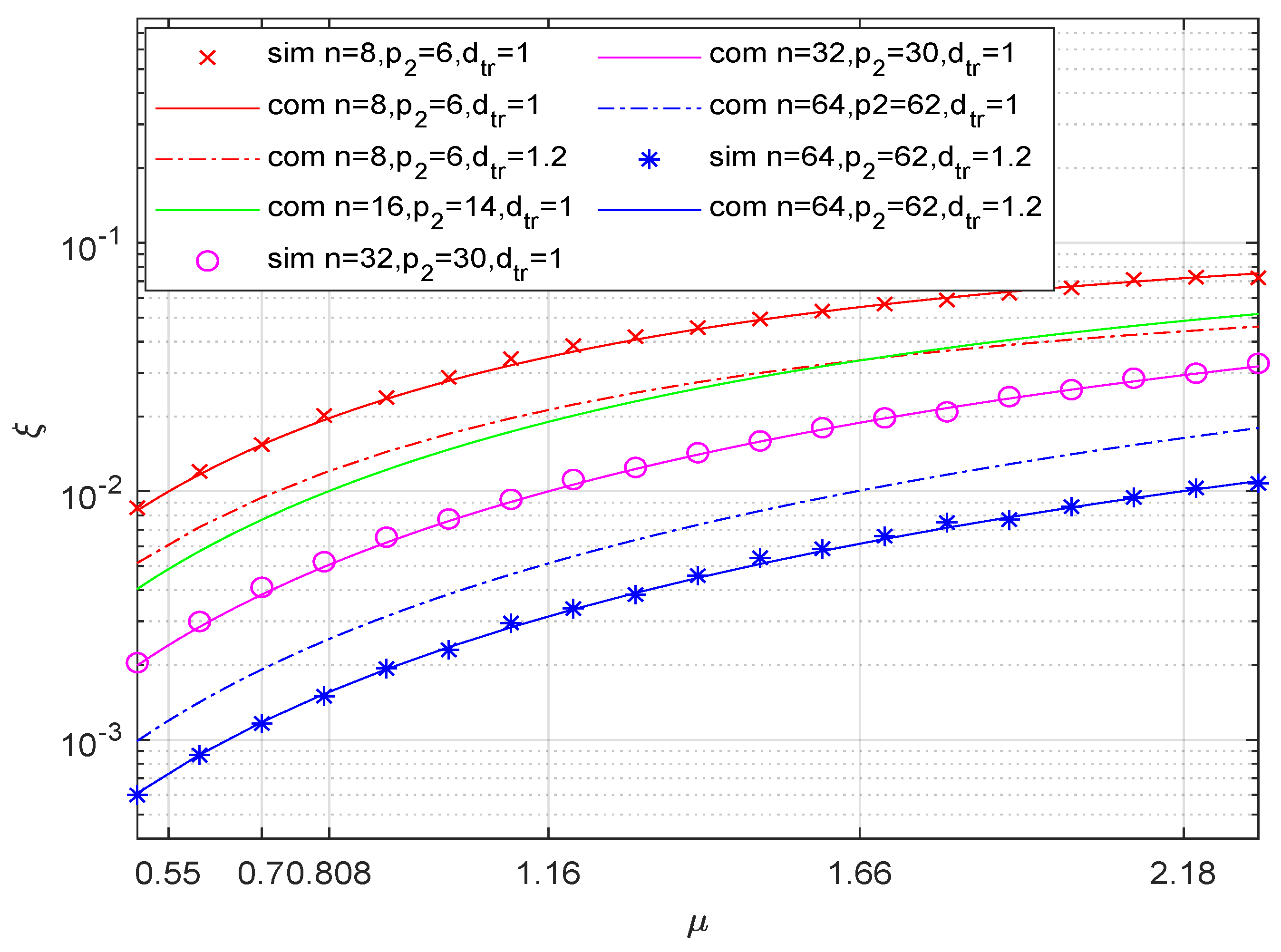
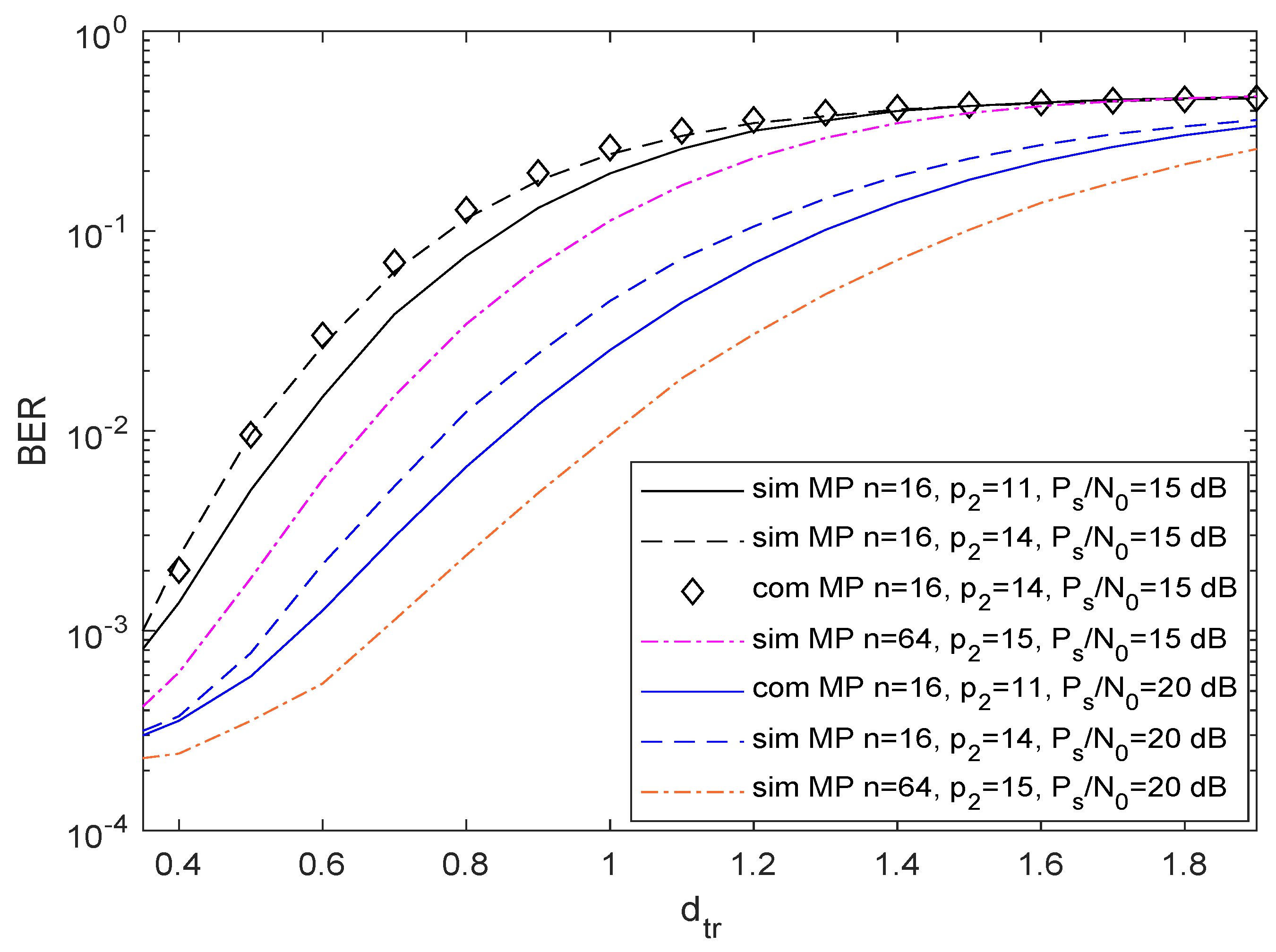
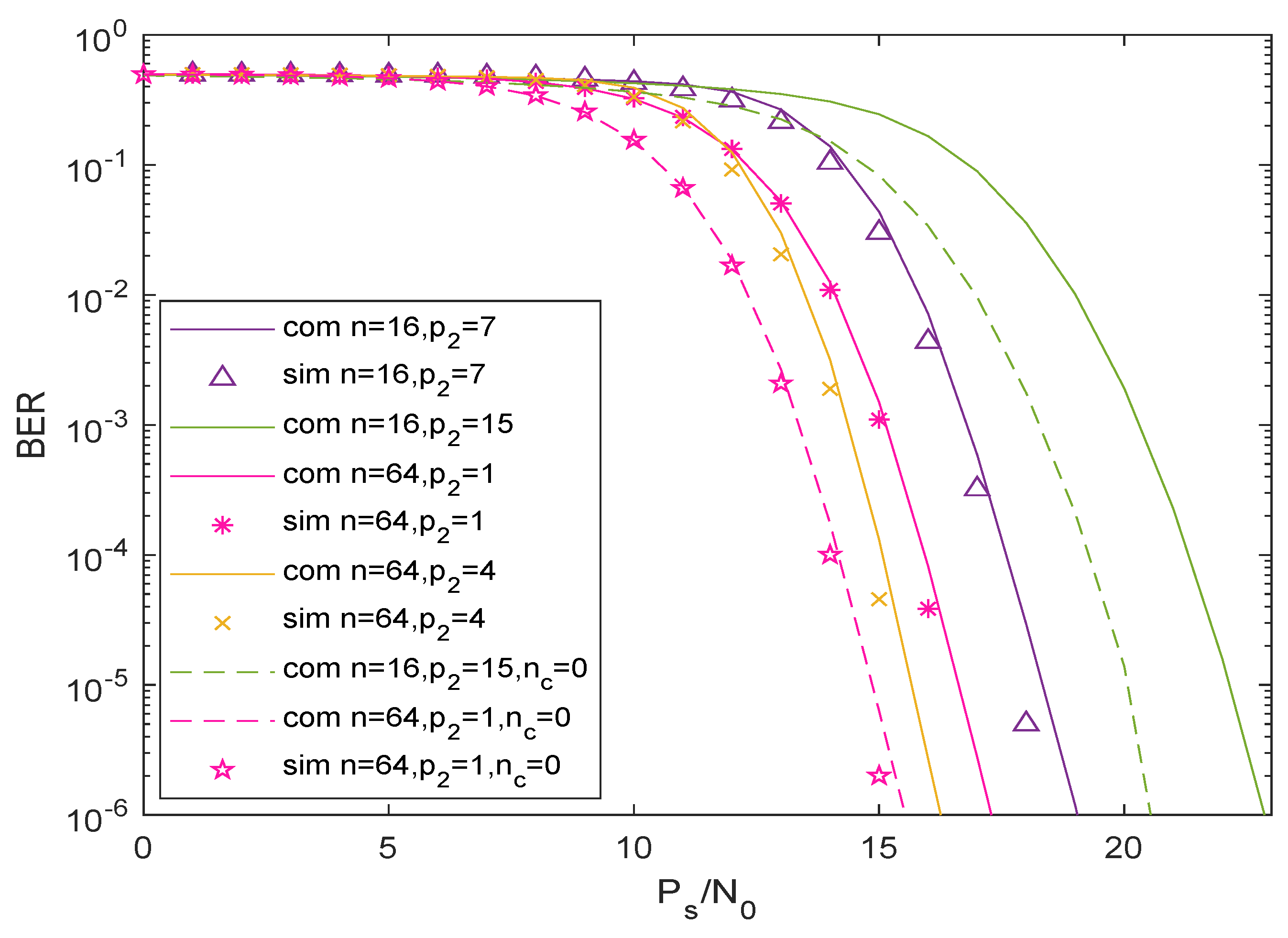
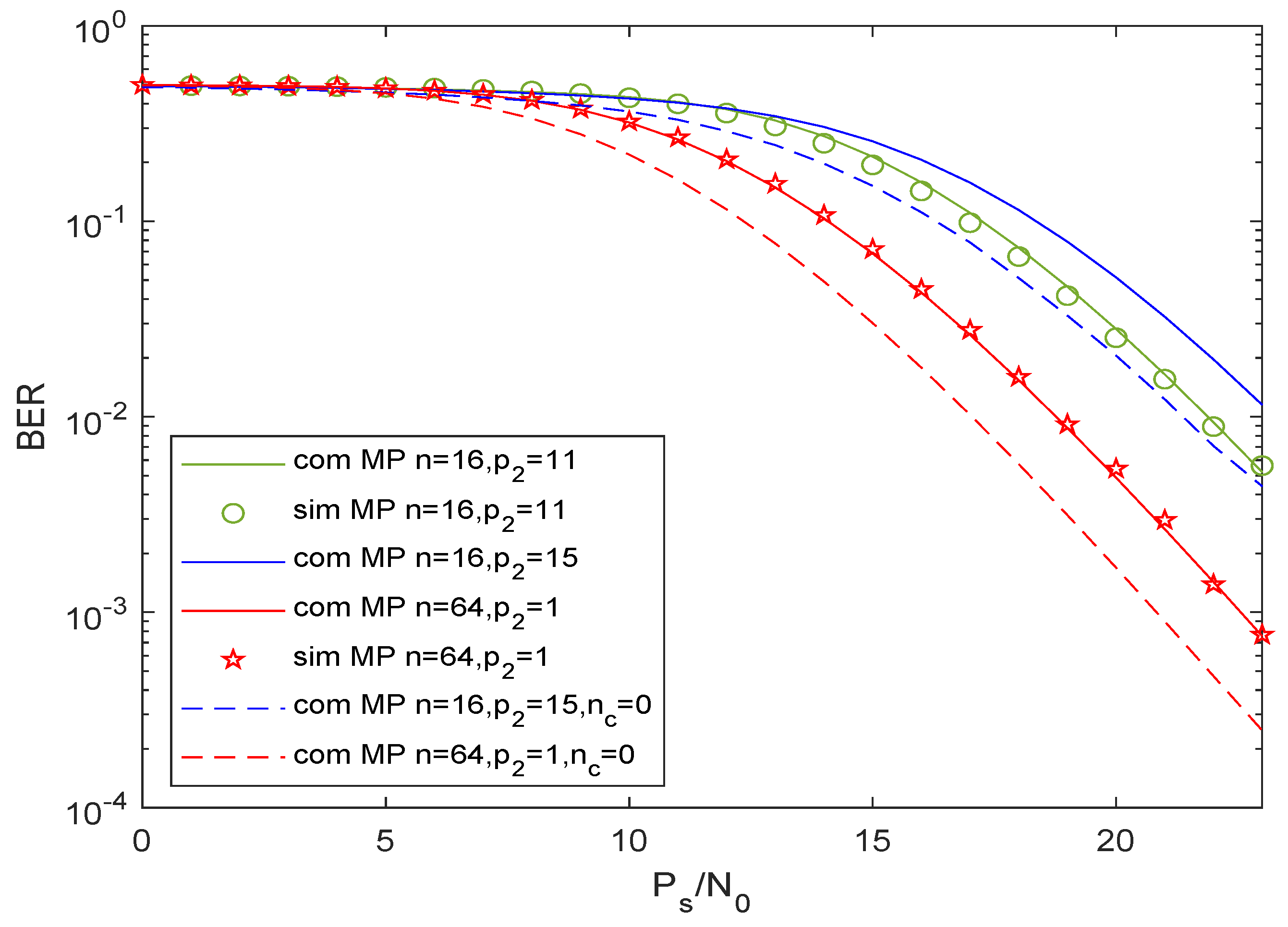
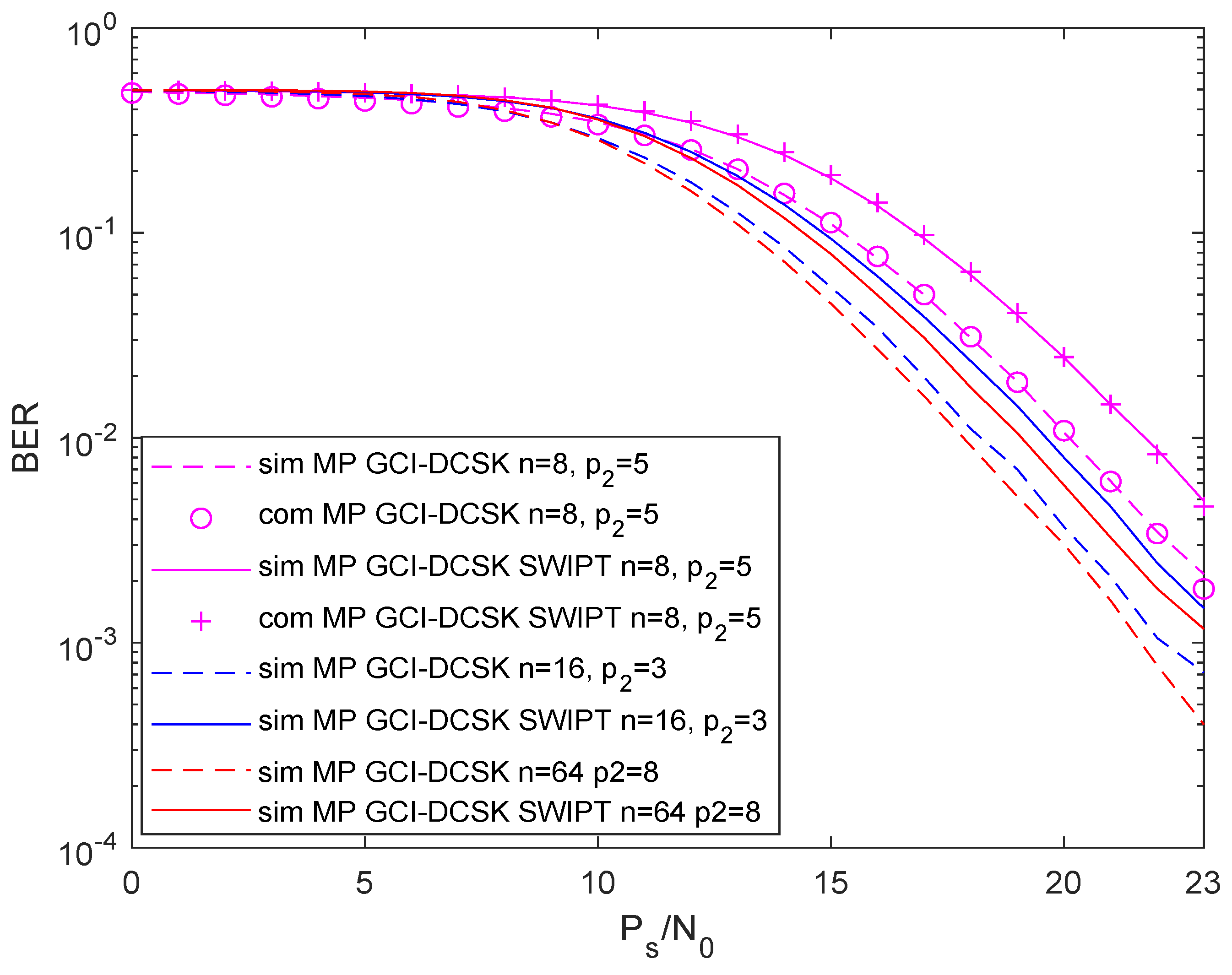
| Modulation | CI-DCSK1 SWIPT | CI-DCSK2 SWIPT | GCI-DCSK | GCI-DCSK SWIPT |
|---|---|---|---|---|
| SE | ||||
| EE |
Publisher’s Note: MDPI stays neutral with regard to jurisdictional claims in published maps and institutional affiliations. |
© 2022 by the authors. Licensee MDPI, Basel, Switzerland. This article is an open access article distributed under the terms and conditions of the Creative Commons Attribution (CC BY) license (https://creativecommons.org/licenses/by/4.0/).
Share and Cite
Zhang, M.; Cheng, G.; Yang, B.; Yang, C. Generalized Carrier Index Differential Chaos Shift Keying Based SWIPT with Conversion Noise and Path Loss-Effect. Electronics 2022, 11, 2406. https://doi.org/10.3390/electronics11152406
Zhang M, Cheng G, Yang B, Yang C. Generalized Carrier Index Differential Chaos Shift Keying Based SWIPT with Conversion Noise and Path Loss-Effect. Electronics. 2022; 11(15):2406. https://doi.org/10.3390/electronics11152406
Chicago/Turabian StyleZhang, Mengxuan, Guixian Cheng, Bohan Yang, and Cheng Yang. 2022. "Generalized Carrier Index Differential Chaos Shift Keying Based SWIPT with Conversion Noise and Path Loss-Effect" Electronics 11, no. 15: 2406. https://doi.org/10.3390/electronics11152406
APA StyleZhang, M., Cheng, G., Yang, B., & Yang, C. (2022). Generalized Carrier Index Differential Chaos Shift Keying Based SWIPT with Conversion Noise and Path Loss-Effect. Electronics, 11(15), 2406. https://doi.org/10.3390/electronics11152406






